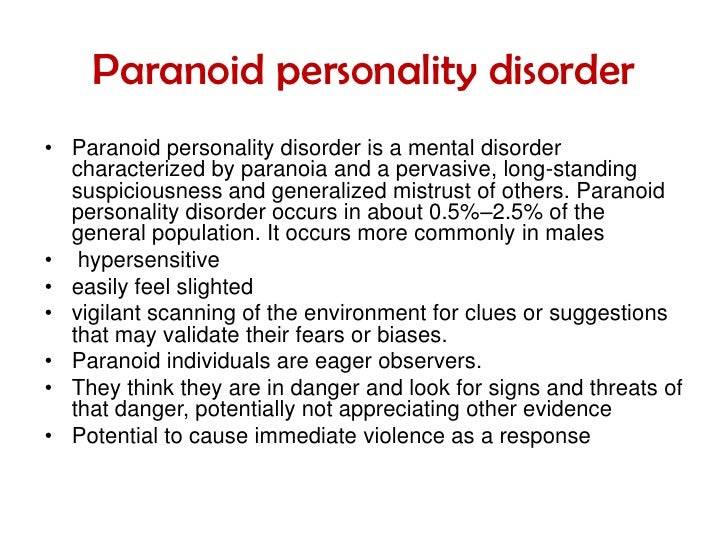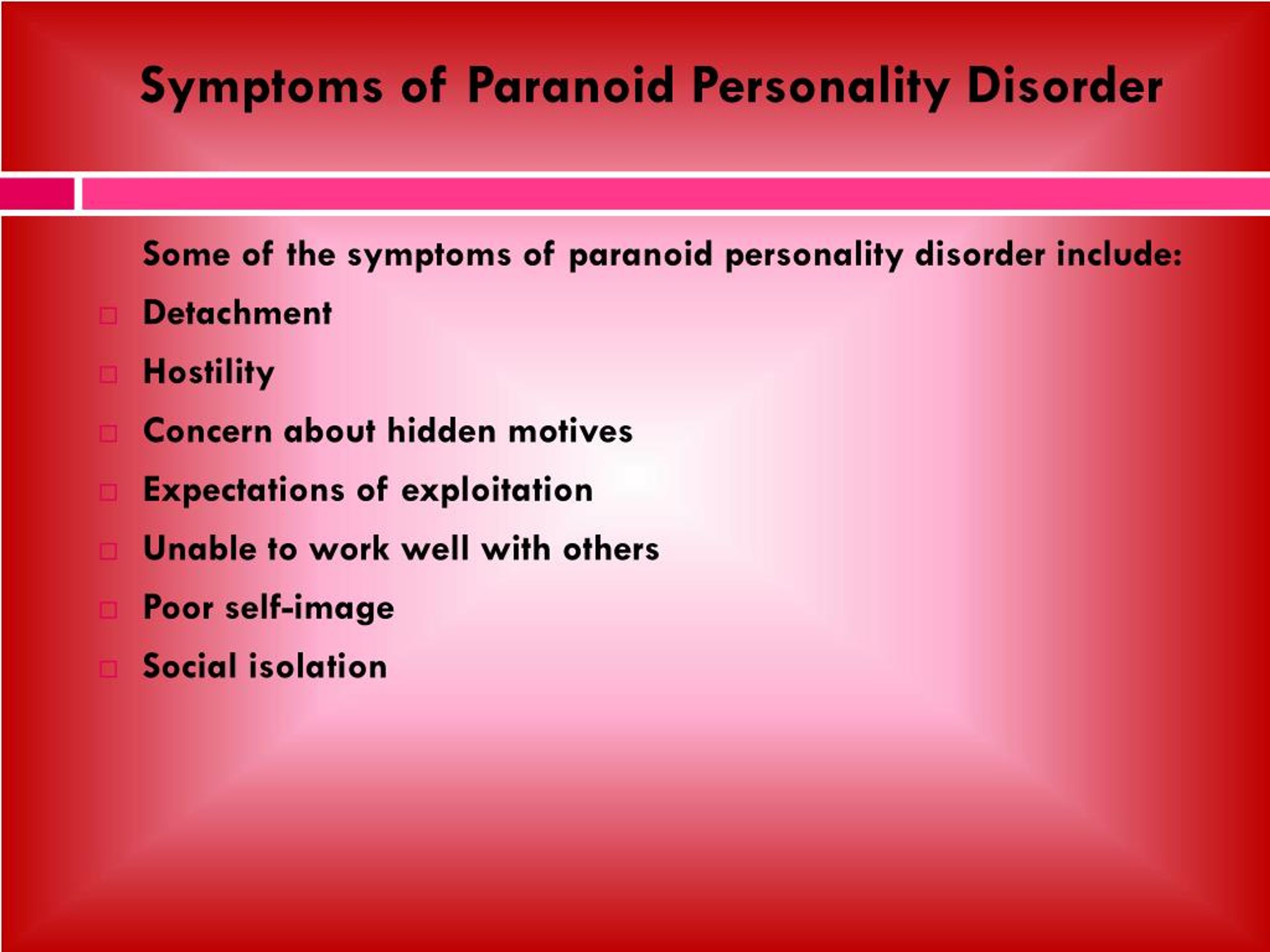

In clinical populations, it is one of the strongest predictors of aggressive behavior (, reviewed in ). Persons with PPD, when not disabled, stop working earlier than non-personality disordered individuals.


Australian epidemiological research confirms the American findings, with PPD contributing to disability independent of the effects of other personality disorders. Epidemiological data from the United States indicates the PPD is a significant cause of disability. Out of proportion with the scant attention dedicated to it, PPD powerfully predicts important adverse outcomes in the treatment of personality disordered patients. How these can be integrated into an approach in the clinic will depend on the results of ongoing research. Facets of PPD can be recognized in Negative Valence Systems and Systems for Social Processes. The rDOC system is explicitly biological, with the ambition of creating a brain-based nosology from the “bottom up”. FFM constructs are implicitly biological, with assumed genetic contributions. The dimensional traits proposed in the DSM 5 have been confirmed to map onto the Five Factor Model (FFM) constructs in pairwise fashion, with negative affectivity/ neuroticism, antagonism/ agreeableness, detachment/ extraversion, disinhibition/ conscientiousness, psychoticism/ openness to experience. The DSM5 research criteria and NIMH Research Domain Criteria (rDOC) system largely succeed in capturing the essential features of PPD. An intriguing correlate of PPD is recognized in the forensic literature regarding persistent litigants, who can clog court systems with unending and unwinnable litigation (Lester et al., 2004).ĭimensional systems of diagnosis are under development that provide a glimpse of the future of the PPD diagnosis in the clinic. However, these conditions occur with distinct presentations and longitudinal course. Paranoid thoughts may also develop in Alzheimer’s Dementia and after acquired brain injury. In all nosologies, PPD excludes psychotic symptoms, including paranoid delusions and hallucinations, commonly encountered in classic psychiatric syndromes like schizophrenia, schizoaffective, and psychotic states of bipolar disorder. In addition to suspiciousness, ICD-10 PPD includes traits of excessive self-importance and hostility, and further proposes subtypes of the expansive, fanatic, querulant and sensitive paranoid personality.

In the psychiatric nosology, DSM-IV and 5 describe PPD as a disorder of suspicious, unforgiving, ruminative, and jealous traits. We will conclude by identifying important unanswered questions regarding these mistrustful and misunderstood humans. Then we will provide descriptive data on one of the largest samples of PPD samples to date. We will summarize the current and past literature on PPD. This review of PPD proposes that examining PPD in the context of childhood trauma provides a useful framework with which to integrate psychological theories regarding PPD, empirical data, and clinical practice. Bernstein and Useda provide a scholarly review of the rich psychological literature on PPD, and recalibrate the relationship between DSM-IV/5 descriptions and what is found in the population. A recent review by Carroll stressed its place in a pathway leading to violence in clinical and forensic settings. In a discussion of PPD in light of the transition from DSM-IV to 5, an argument was made to rethink PPD as the dimensional representation of trait-like suspicious hostility, rather than a categorical syndrome. The reader can be directed to several excellent reviews of PPD. Fortunately, our understanding of PPD has improved as research has accrued. And yet, the clinical reality is that PPD is a severe, relatively common clinical problem that is difficult to treat. Science has neglected PPD individuals with PPD are slow to volunteer for research studies and it has not been a priority for research funding. Clinically, it is overlooked, or its symptoms are accounted for by comorbid personality disorders. It was once theorized to be associated with schizophrenia due to the phenomenological similarity of suspiciousness to paranoid delusion, but the evidence for this association is not strong. Paranoid Personality Disorder (PPD) seems destined to be misunderstood.


 0 kommentar(er)
0 kommentar(er)
